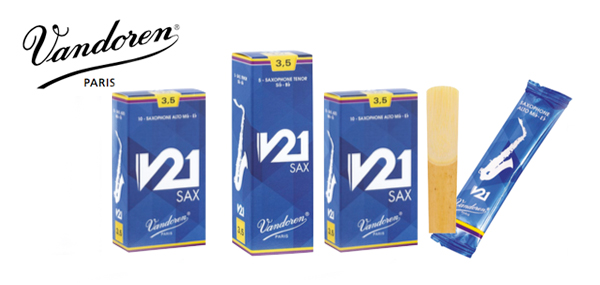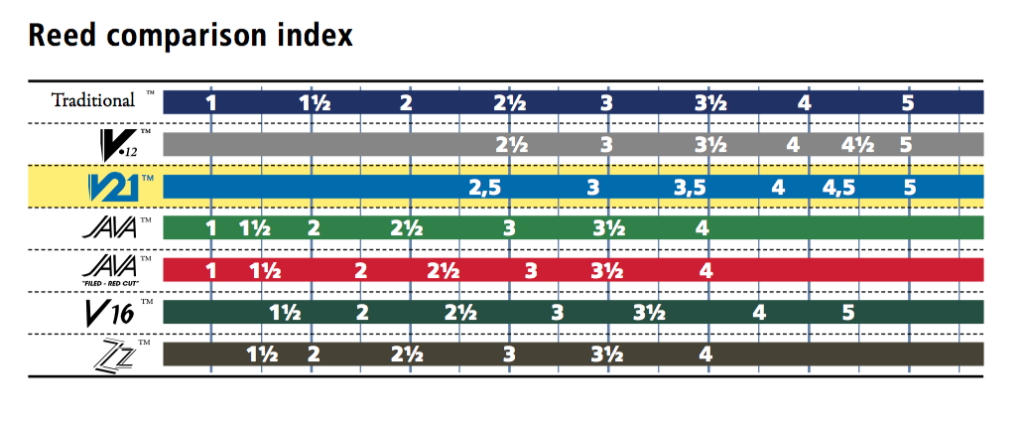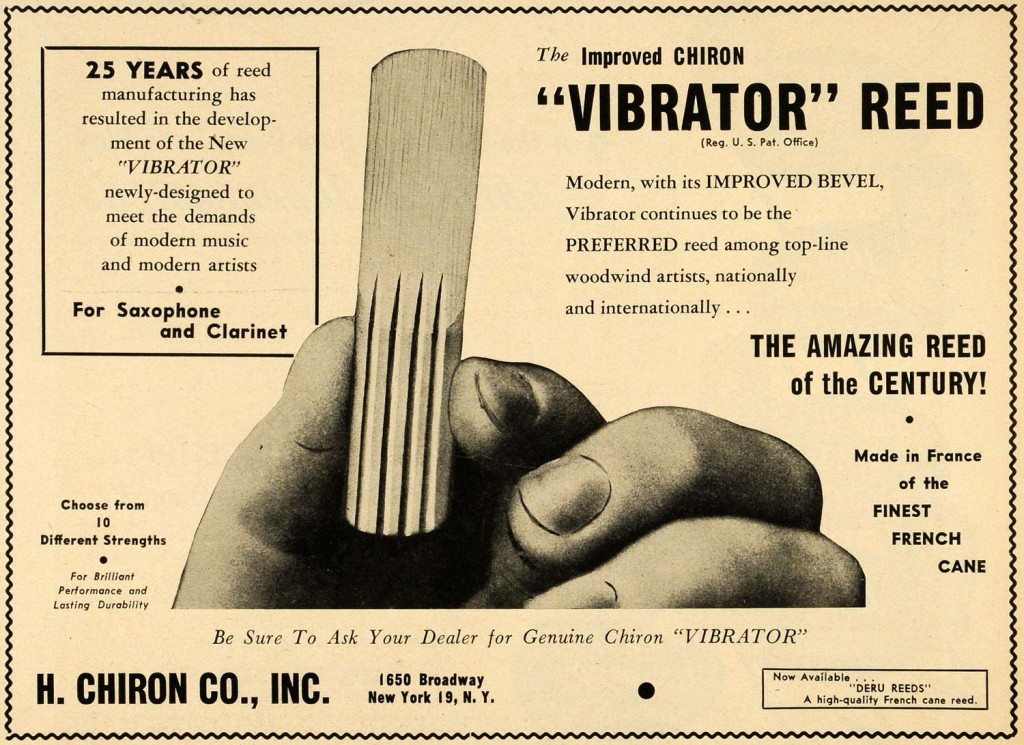New Vandoren V21 Sax Reeds…
14th April 2016Whilst it’s no surprise that Vandoren have just released the new V21 Sax reeds (hot on the heels of the Clarinet V21’s) what is more intriguing is quite who or what they are intended for, or at least getting this information out of them (as a UK Retailer or Customer) isn’t as easy as it could be.
Available for Alto and Tenor Sax the new V21 reed is described as “a premium, versatile reed. In any style – with any mouthpiece – you’ll achieve maximum results with the V21”. Forgive my slight scepticism but perhaps this is high on marketing speak and low on technical content…Regular readers of the blog and experienced players will know that there is significant differences in reed cuts and thus what mouthpiece types they are best suited to, it isn’t pot luck or black magic. Whether the tip is thin or thick affects the immediacy of response and cleanliness of articulation, and the relative thickness of heart and shoulders etc also have a big effect on the playability and suitability with regards certain mouthpieces. So, what would be really nice is for the suppliers & retailers (because I’m sure we’re not totally innocent on this, and Vandoren certainly aren’t alone either) to actually provide some meaningful info when releasing new products.
What they do tell us is that they are unfiled, like the Java Green, V16 and ZZ and that they are the first Sax reeds to have a conical shape…why? what does that do? Who/what will it suit best? What was the motivation? etc. There is no more detail offered about the heart, the tip thickness, the cut etc. For the record, on the clarinet version the tip thickness was between the traditional and the thicker Rue 56, i.e. medium thickness…ish! We can of course examine this upon receiving them but it may seem sensible for the manufacturer to offer that information to prospective buyers.
Or, is it? The cynic in me might speculate that part of the strategy of any reed or mouthpiece manufacturer could be to exacerbate the ‘myth’ of these products with rather vague assertions of their qualities (flexible, responsive, warm, easy etc) with a view to encouraging a speculative purchase from an intrigued user. It would be extremely unfair to single out Vandoren for this as you could level this point at a wide range of Woodwind & Brass manufacturers and suppliers. Whilst this ‘marketing blurb’ may work in the short term surely an end user with a more considered understanding of why they use certain reeds would actually encourage more brand loyalty as there would be less need to keep jumping around between makes in the blind hope of finding the right set-up. I genuinely believe this is not an intentional dumbing down by the manufactuers to deceive but rather a lack of faith in the technical understanding and knowledge of their end users, and probably a reliance on the marketing team, not the technical team to handle the text, message, release etc.
However, consider the amount of shops worldwide who stock reeds. Just imagine knowing that as a company you can expect an order from all those shops once or twice a year when you release a major new line, from a sales point of view that’s a really great ‘banker’ to have put into your forecasts and something the shareholders would also appreciate.
Upon watching the video that has been accompanying this release (click above) there is a little more info, albeit in the last 10 seconds(!), about the possible motivation for these reeds. Jerome mentions that V21 is especially suited as a name because the demands of being a 21st century Saxophonist require a reed that is extremely flexible for a wide range of genres and playing styles, as he so ably demonstrates; from classical to slap tounging and multi-phonics, although in my experience I’d say less than 1/100 Saxophonists I encounter would list those playing styles as their day to day, maybe I’m hanging out with the wrong crowd.
This raises another point about who they consult on these new projects (usually conservatoire teachers and students in Paris), and also whether they release these items first in some countries but not others, with little info coming to the UK commonly being the case, but that’s for another day 🙂 What may be good is if Vandoren (or whomever this may be true of) try and explain how and why this new reed has more flexibility, rather than just asserting that it does. I can assume from my own knowledge base what they’ve done but really they shouldn’t be afraid of sharing that with potential buyers who may be less experienced. I should stress that I write this not having had chance to try the reeds yet, in a way the reeds are irrelevant to my point; my comments are purely about a communication trend I see across many manufacturers, rather than the relative qualities of the V21’s in particular. Which, by the way, I’ve heard only good things about from some pro’s who got a sneak early peek.
So, what can we take from this? That the reed makers are all a bunch of baddies? No, I can assure you they are actually a good bunch (on the whole) and when speaking with the development teams they do really care about advancing the product to meet the needs of todays instrumentalists. However, perhaps it’s time for all these companies to think a little more about how they present products, and have some faith that by ‘educating’ their customers about the technicalities and motivations for new products they could actually have more impact and build more brand loyalty. Like all things, the proof is in the pudding so I’ll be reporting back when I’ve had a good chance to play them myself, so stay tuned!
If you wish to try some out and let us know how you get on that would also be marvellous. You can see the Alto reeds here and Tenor reeds here.
On a final note, don’t think this is a new phenomenon; the ambition of trying to meet the needs of modern players and complimenting it with all sorts of flowery nonsense has been done many times before…and before you ask, NO, we don’t stock any Vibrator Reeds!
Author: Sam – Woodwind Specialist (contact)



